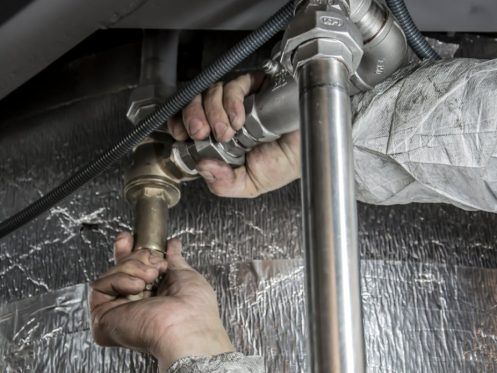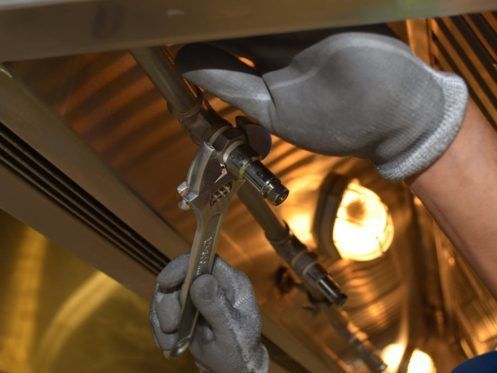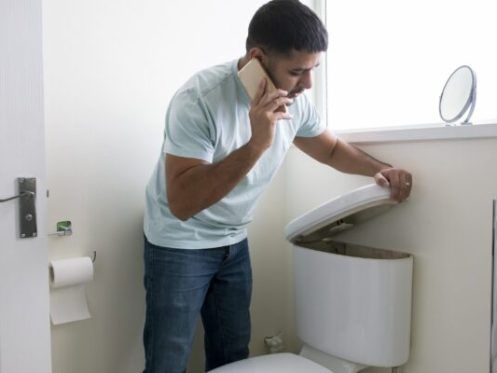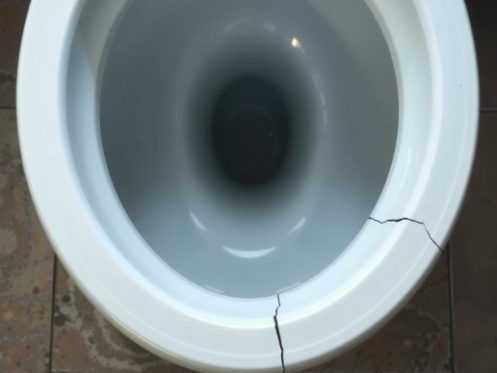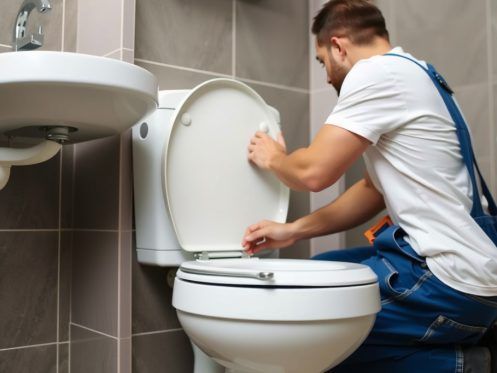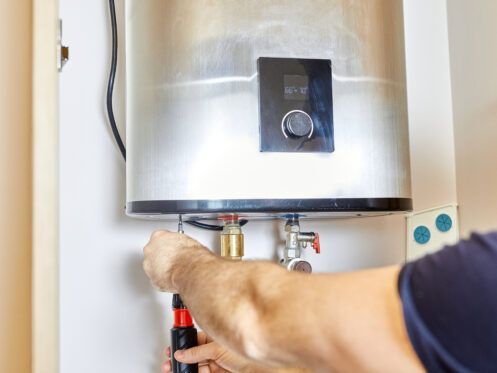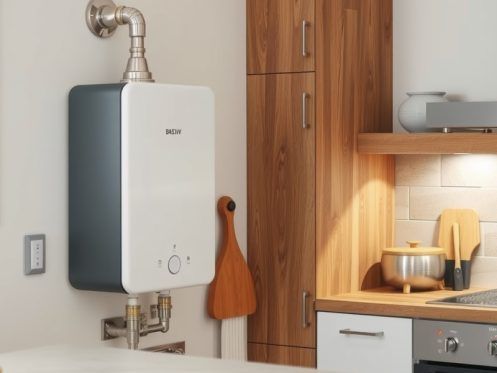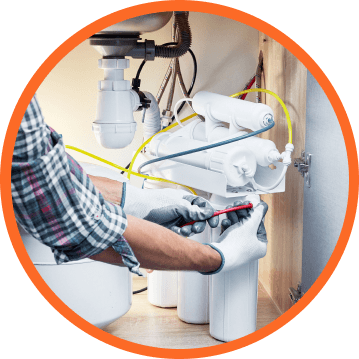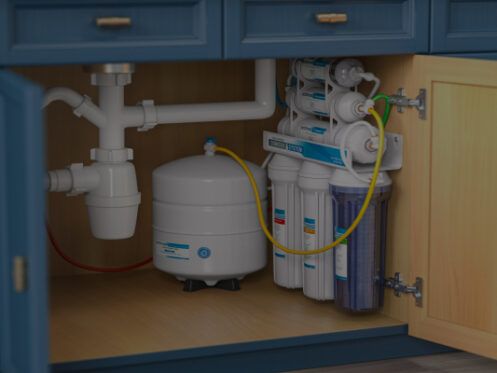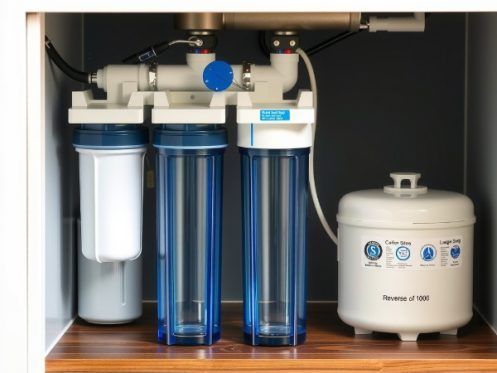
When you turn on the tap, you expect clean, safe drinking water. But if you’re living in Bountiful, Sandy, or anywhere else in Northern Utah, you’ve probably noticed that your tap water doesn’t always meet that expectation. Maybe it smells funny, tastes off, or leaves behind a chalky residue. That’s where water filtration comes in. At Rare Breed Plumbing, we get a lot of questions about reverse osmosis vs other water filtration methods—especially from homeowners who are serious about improving their water quality. So let’s break down the different options, talk about how they work, and help you figure out which filtration system is best for your home and your family.
What Is Reverse Osmosis and How Does It Work?
We go into a deep dive about the reverse osmosis process in our other blog post here, but here’s a short version for a refresher.
A reverse osmosis system (also known as an RO system) uses a semipermeable membrane to filter water. The reverse osmosis filtration system works by forcing water through a semi-permeable membrane using pressure (specifically, osmotic pressure in reverse). This membrane traps contaminants like heavy metals, dissolved salts, organic compounds, and even microbial contamination.
The result? Very pure water. Cleaner, better-tasting, and safer than untreated tap water. A reverse osmosis filtration system typically includes multiple stages—often sediment and carbon filters before the RO membrane and sometimes a polishing filter afterward. The system removes dissolved solids, volatile organic compounds, and chemical contaminants that other filtration methods might miss.
It’s like a super-charged filtration process. Reverse osmosis employs multiple basic filter types in a compact setup to deliver high-quality water to your tap.
Other Types of Water Filtration Available in Utah
There are several other water purification technologies out there, and while reverse osmosis is one of the most powerful, it’s not always the best fit for every home or situation. Here’s how the other main filtration methods compare.
Activated Carbon Filters
Activated carbon filters (also called carbon filtration systems) are one of the most popular water filtration options. They use a type of charcoal that’s been treated to create a large surface area, which helps trap contaminants.
They’re great at removing chlorine, sediment, and many organic chemicals that affect taste and odor. They can also reduce some pesticides and industrial solvents. These filters work through a process called adsorption, where contaminants stick to the surface of the activated carbon.
But when you compare carbon filters vs reverse osmosis systems, it’s no contest in terms of purification. Carbon filters don’t remove dissolved solids or heavy metals. They also don’t do much for microbial contamination. Reverse osmosis, thanks to its semi-permeable RO membrane, does.
So while carbon filtration is great for improving the taste of water, it’s not a complete purification process on its own.
Ultraviolet Light Water Purification
UV light filtration uses short-wavelength ultraviolet light to kill bacteria, viruses, and other pathogens. The UV rays disrupt the DNA of these microorganisms, making them harmless.
This method is excellent for biological contaminants. But here’s the thing: UV systems don’t actually filter anything. They don’t remove suspended solids, dissolved chemicals, or anything that’s not alive. That means chemical contaminants, dissolved salts, and other pollutants can still be in your water.
UV light systems are best used in combination with other methods, such as sediment filters or activated carbon filters. Compared to reverse osmosis filtration, they handle different aspects of water purification. Reverse osmosis removes physical and chemical impurities, while UV targets microbial contamination.
Ceramic Filters
Ceramic filters use tiny pores to trap contaminants like bacteria, protozoa, and sediment. Water flows through the porous ceramic material, and the particles that are too big to pass through get trapped.
They’re great for basic filtration needs, especially in areas without access to treated water. But ceramic filters don’t remove dissolved chemicals, organic compounds, or viruses.
So again, when it comes to reverse osmosis vs ceramic filters, the RO system wins if you want very pure water. Ceramic filters are more suited for emergency kits or situations where you’re mainly worried about bacteria.
Distillation
Distillation is an old-school method of water purification. It works by boiling water and collecting the steam, which then condenses back into liquid. This process leaves behind dissolved solids, heavy metals, and most chemical contaminants.
Sounds great, right? The problem is, it’s slow. Very slow. And it uses a lot of energy. Also, like reverse osmosis, it removes beneficial minerals from the water.
When comparing distillation to reverse osmosis filtration systems, RO tends to be more practical for everyday home use. Distillers take up more time and space, and they can’t keep up with household water usage.
Kinetic Degradation Fluxion (KDF Filters)
KDF filters use a redox (reduction-oxidation) reaction to remove chlorine, heavy metals, and hydrogen sulfide. They’re often made of copper and zinc.
These filters are excellent at neutralizing certain chemical contaminants and are frequently paired with carbon filtration or other media in whole-house water filters.
But like other filtration methods, they can’t handle everything on their own. Reverse osmosis covers a wider range of contaminants. That’s why many filtration systems combine KDF with activated carbon or reverse osmosis to give a more complete filtration process.
Ultrafiltration (UF)
Ultrafiltration uses a membrane, kind of like reverse osmosis, but the pores are larger. It removes bacteria, protozoa, and some viruses, along with suspended solids and particulate matter.
Unlike reverse osmosis, UF doesn’t remove dissolved salts, chemical contaminants, or many dissolved substances. But it keeps beneficial minerals in the water, which is a plus for some homeowners.
So if you’re comparing ultrafiltration to a reverse osmosis RO system, the RO system wins when it comes to delivering very pure water. But UF uses less water and energy, so it might be suitable if you’re looking for a low-maintenance system.
Ion Exchange (Water Softeners)
Ion exchange is what water softeners use to replace hardness-causing minerals (like calcium and magnesium) with sodium or potassium. This helps prevent scale buildup in pipes and appliances.
This type of filtration system doesn’t purify water in the traditional sense. It doesn’t remove chemical contaminants, microbial contamination, or volatile organic compounds.
But if you’ve got hard water (and let’s face it, most of Utah does), a water softener can be a lifesaver. At Rare Breed Plumbing, we offer full-service installation and repair for water softeners, whether you’re pairing them with an RO system or just want to improve your plumbing life.
If you’re weighing reverse osmosis vs water softeners, remember this: they’re complementary. One improves water feel and protects plumbing, the other delivers clean drinking water.
So… Which Water Filtration System Should You Choose?
Choosing between reverse osmosis and other water filtration methods comes down to what you need.
If you’re worried about the taste and smell of your tap water, activated carbon filters or refrigerator filters might be enough. If you’re on well water or if you suspect microbial contamination, UV light and ceramic filters can offer peace of mind. If hard water is your issue, you probably want a water softener.
But if you’re looking for a system that removes the widest range of harmful contaminants—including dissolved chemicals, heavy metals, and organic compounds—a reverse osmosis filtration system is hard to beat. Reverse osmosis technology, especially when installed by a local team like Rare Breed Plumbing, gives you a powerful, efficient, and reliable way to get high-quality water every day.
Ready to Ditch Contaminated Water for Good? Let Rare Breed Plumbing Help!
Clean, pure water doesn’t have to be a luxury. With the right filtration system, it can be your everyday reality. Whether you’re leaning toward a reverse osmosis system or exploring other water purification options, Rare Breed Plumbing is here to guide you. Our team serves Bountiful, Sandy, and surrounding areas with expert RO installation, maintenance, and honest advice. Let us help you find the best solution for your family’s water needs. Call today to schedule your free water quality consultation or ask us anything about filtration technology—we’re always happy to help.


